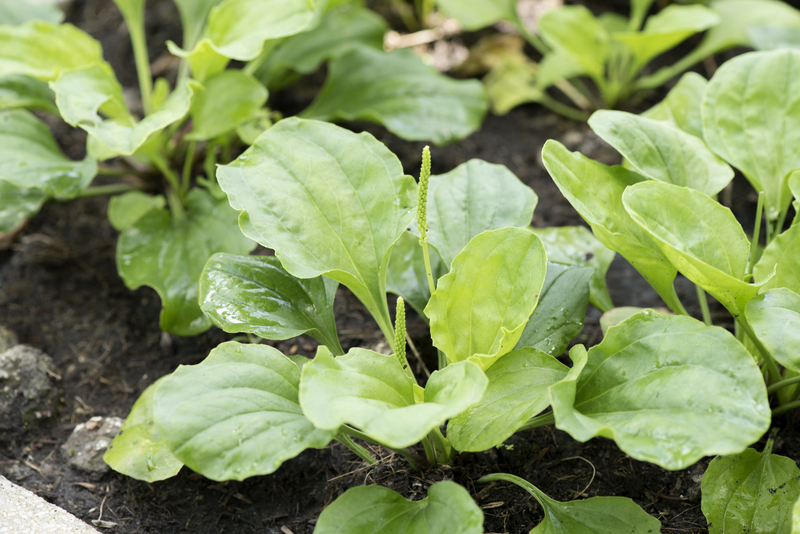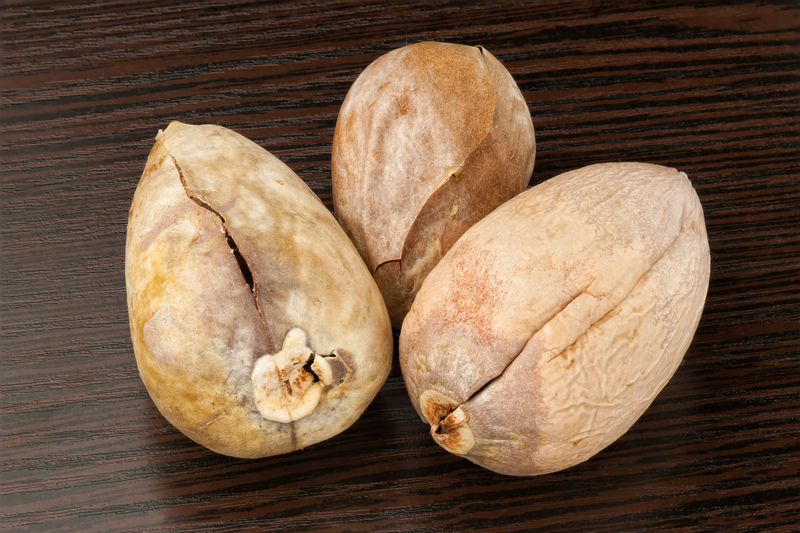Crafting an Engaging Garden for Young Explorers
Posted on 19/06/2025
Crafting an Engaging Garden for Young Explorers: Sparking Curiosity and Discovery
Are you seeking creative ways to foster curiosity, imagination, and hands-on learning for your children? Designing an engaging garden for young explorers can transform your outdoor space into an interactive world brimming with natural wonders. In this comprehensive guide, we'll cover everything from choosing the right plants to incorporating interactive features and essential safety tips, ensuring your kids have a magical, educational, and unforgettable experience in your backyard oasis.

Why Creating a Children's Exploration Garden Matters
Children are innately curious. They thrive in environments that stimulate their senses and provide endless opportunities to learn through play. Gardens designed for young explorers encourage physical activity, boost creativity, and help foster a deep respect and appreciation for nature.
- Sensory Development: Gardens engage all five senses, enhancing sensory awareness.
- Environmental Stewardship: Early exposure to gardening fosters lifelong nature-friendly habits.
- Problem Solving: Children learn by observing, experimenting, and making decisions in a real-world setting.
- Social Skills: Gardening encourages sharing, teamwork, and communication.
- Fine and Gross Motor Skills: Activities like digging and planting improve coordination and strength.
Planning Your Youth Adventure Garden
Before breaking ground, thoughtful planning is essential. Garden designs for young explorers should balance fun and safety, adventure and order. Here's how to get started:
1. Assess Your Space
Walk around your yard with your children, involving them in the planning process. Ask questions like: "Where do you like to play?" or "What do you want to grow?" Consider sun and shade, proximity to water, and potential hazards. Map out areas for play, exploration, and rest.
2. Safety First!
A safe, child-friendly garden is the foundation for fun:
- Fencing: Ensure boundaries are secured to prevent wandering off.
- Non-toxic Plants: Research plants to avoid anything poisonous or with thorns.
- Steady Paths: Use smooth, non-slippery materials for trails and walkways.
- Safe Tools: Choose age-appropriate, child-sized gardening tools.
- Supervised Water Features: If you add a pond or birdbath, ensure constant adult supervision.
The Essentials: Elements of an Engaging Garden for Kids
A fully immersive garden for youthful adventurers goes beyond pretty flowers. Incorporate these features to entice young minds:
1. Themed Exploration Zones
- Butterfly Haven: Plant milkweed, coneflowers, and other nectar-rich varieties to attract butterflies.
- Herb Maze: Create a winding path lined with fragrant herbs like lavender, mint, and rosemary.
- Pollinator Patch: Choose wildflowers and flowering shrubs that invite bees, hummingbirds, and ladybugs.
- Mini Meadow: Dedicate a patch to grasses and native wildflowers--perfect for bug hunts and imaginative play.
- Edible Garden: Plant cherry tomatoes, sugar snap peas, strawberries, or blueberries--fruit and veggie snacks straight from the source!
2. Natural Play Features
Use natural materials to set up fun and experiential play zones:
- Willow Dens or Living Teepees: Weave living branches into secret hideouts.
- Mud Kitchen: Set up an outdoor area with old pots, pans, and buckets for muddy creations.
- Stepping Logs: Arrange tree stumps or logs for balancing and hopping games.
- Sand and Gravel Pits: For digging, building, and treasure hunting.
- Water Play: Include a shallow stream, hand-pump, or water table for hands-on aqua activities.
3. Senses and Secrets
Enriching a garden for little adventurers means taking advantage of color, scent, texture, sound, and movement:
- Texture Trail: Create paths or areas with pebbles, wood chips, and soft grass for different tactile experiences.
- Sound Garden: Incorporate wind chimes, tall grasses that whisper, or bamboo for musical rustling.
- Secret Spaces: Add arches, tunnels of beans or sunflowers, or tiny fairy gardens that spark imagination and solo play.
4. Hands-On Learning Stations
- Bug Hotel: Stack twigs, pine cones, and bamboo to provide shelter for beneficial insects.
- Compost Corner: Teach about recycling with a kid-friendly compost bin.
- Weather Station: Mount a rain gauge, thermometer, and wind spinner for daily nature observations.
- Observation Bench: Set up a sitting area with journals and magnifying glasses for sketching and note-taking.
Choosing the Right Plants for Young Explorers' Gardens
Not all plants are created equal when it comes to young children. Selecting safe, sensory-rich, and easy-to-care-for greenery will enhance your garden's appeal and educational value:
Best Plants for a Kid-Friendly Exploration Garden
- Sunflowers: Tall, fast-growing, and fascinating to watch.
- Sensory Herbs: Such as mint, basil, thyme, and lemon balm. Delightful to smell and taste.
- Lamb's Ear: Soft, velvety leaves are irresistible to touch.
- Nasturtiums: Edible leaves and flowers--peppery and colorful.
- Snapdragons: Fun "dragon mouth" flowers.
- Strawberries and Cherry Tomatoes: Instant snack rewards.
- Sweet Peas: Lovely scent and beautiful blooms.
- Calendula and Marigolds: Bright, easy to grow, and pollinator friendly.
Plants to Avoid in Garden Spaces for Children
- Oleander
- Foxglove
- Yew
- Angel's Trumpet
- Daffodil bulbs (toxic when ingested)
- Any plants with sharp thorns or irritating sap
Design Tips for a Wholesome Garden Adventure
To enliven garden adventures for young explorers, carefully consider layout, accessibility, and inclusivity:
- Multi-Sensory Experience: Incorporate elements that appeal to sight, touch, smell, taste, and sound.
- Accessible Pathways: Ensure paths are wide and smooth for wheelbarrows, strollers, or mobility aids.
- Flexible Spaces: Use moveable logs, pots, and stepping stones to allow for creative rearrangement and evolving play.
- Shade and Shelter: Offer shady nooks with trees, pergolas, or fabric tarps for hot days.
- Inviting Entrances: Arbors, gates, or painted stones invite kids to explore with excitement and anticipation.
Activities and Garden Games for Young Explorers
Now your explorer's backyard garden is ready for adventure--what can kids do in this lively space?
Nature Scavenger Hunt
- Make a list or cards featuring things to find (a red leaf, a feather, a buzzing bee).
- Use magnifying glasses or binoculars for a "detective" experience.
Planting and Harvesting
- Let children plant seeds, label them, and track their growth with photos or drawings.
- Encourage harvesting and tasting the fruits (or veggies) of their labor!
Mud Art and Nature Crafts
- Collect leaves, petals, and stones for collages or fairy houses.
- Mix up natural "mud paint" for creative outdoor masterpieces.
Bug and Bird Watching
- Use field guides for spot-the-butterfly or identify-the-bird games.
- Keep a simple nature journal to log findings.
Stargazing Nights
- Lay out blankets after dark and look up for constellations and fireflies.
- Talk about nocturnal garden creatures.
Maintaining Your Children's Discovery Garden
A garden for young adventurers will thrive with regular care and engaged participation.
- Weekly "Garden Time": Set aside a regular time each week for family gardening.
- Assign Roles: Even small kids can help with watering, weeding, and harvesting.
- Rotate Activities: Keep things exciting with new projects--like making bird feeders or setting up a mini greenhouse.
- Record Progress: Use photos, drawings, or scrapbooks to document your garden's evolution through the seasons.
Seasonal Ideas to Keep Exploration Alive Year-Round
Spring
- Plant seeds indoors and transplant outside later.
- Collect rainwater in barrels for watering experiments.
- Go on a "signs of spring" nature hunt.
Summer
- Host a garden picnic or tea party with harvested produce.
- Try nighttime moth and bat watching.
- Make sun prints with leaves and flowers.
Autumn
- Press colorful leaves or create leaf rubbings.
- Harvest and taste autumn crops like pumpkins or apples.
- Prepare the garden for winter with mulching or bulb planting.
Winter
- Build natural shelters for wildlife or set up a bird feeder.
- Start a worm compost bin indoors.
- Plan next year's exploration garden together, using books and catalogs.
Engaging Garden Resources for Families
Expanding your horizons is easy with the right resources:
- Children's Gardening Books: Titles like Roots, Shoots, Buckets & Boots or The Garden Classroom inspire and instruct.
- Local Garden Clubs: Many host kids' workshops and plant swaps.
- Nature Journals: Encourage daily or weekly entries about garden discoveries.
- Online Kid-Gardening Resources: Websites like KidsGardening.org offer project ideas and community connections.

Key Takeaways for Crafting a Garden Adventure for Kids
- Welcome kids' ideas: Let their curiosity guide your choices.
- Make it accessible, safe, and inclusive: Adapt pathways and features for all abilities.
- Encourage hands-on learning: Integrate exploration, observation, and experimentation daily.
- Incorporate sensory stimulation and surprise: Use texture, color, sound, and movement creatively.
- Foster a close bond with nature: Celebrate the magic of the outdoors together year-round.
Conclusion: Growing Young Explorers in Your Backyard Sanctuary
Establishing an engaging, child-focused garden is more than landscaping; it's an invitation to adventure, learning, and growth. With thoughtful design, diverse plant choices, interactive features, and plenty of opportunities for discovery, your garden will become a lifelong classroom and playground. Whether you have a sprawling lawn or a modest patio, each space holds the potential to inspire young explorers--and foster memories that will grow along with your plants.
Start today: Gather your young adventurers and co-create a garden full of wonder, excitement, and nature's magic.

